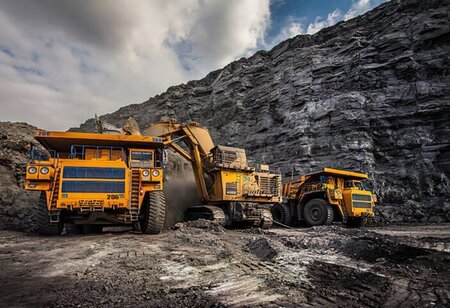
In the midst of discussions at COP28 in Dubai focused on transitioning away from fossil fuels, India grapples with a perplexing energy dilemma. While global climate diplomats debate the imperative to reduce reliance on fossil fuels, the Indian government announced on December 11 its intention to nearly double coal production, targeting 1.5 billion tons by 2030. Furthermore, on December 22, Power Minister Raj Kumar Singh unveiled plans to add 88 gigawatts of thermal power plants by 2032, with the majority relying on coal combustion.
This move, seemingly contradictory to global climate goals, stems from India's pressing need to rapidly expand its power capacity. With upcoming elections in April and May, Prime Minister Narendra Modi is determined to avert any risks of power shortages, particularly following record heat waves and surges in peak electricity demand over the past two years.
Sandeep Pai, Director of the climate-focused organization Swaniti Global, elucidates India's dual policy approach, emphasizing the simultaneous push for renewables alongside an increased emphasis on coal and other fossil fuels, all driven by the escalating power demand.
Despite these intentions, India faces challenges in meeting its ambitious renewable energy target of 500 gigawatts by 2030. The installation rates of solar and wind power have lagged, reaching only about a third of the required pace, according to BloombergNEF. Rohit Gadre of BNEF identifies misaligned incentives of state-owned electricity retailers, land acquisition difficulties, and inconsistent policies at federal and state levels as key impediments to renewable energy deployment.
However, coal, too, encounters obstacles in attracting new investment. Vibhuti Garg, South Asia Director for the Institute for Energy Economics and Financial Analysis, notes that solar and wind power plants can be constructed swiftly and at lower costs compared to coal power plants, which require more time and higher investments.
Experts, including Pai and Gadre, express skepticism regarding India's ability to meet its coal production targets. BNEF's economic-transition scenario envisions India's coal consumption peaking at 1.1 billion tons before 2040. The nation, classified as a lower-middle-income country, necessitates substantial investment in its energy infrastructure to fuel economic growth. Per capita electricity consumption in India remains significantly lower than that of developed countries and even China, leaving ample room for increased demand.
India, like other major developing nations, requires stronger incentives to embark on a greener trajectory. The Just Energy Transition Partnership, initiated by the Group of Seven nations over the last three years to assist countries like South Africa, Vietnam, and Indonesia in reducing coal use, has faced challenges and is yet to demonstrate significant results. Environment Minister Bhupendra Yadav emphasizes the need for effective policies, technology transfer, and skills training rather than just financial aid from wealthier nations to facilitate a transition away from fossil fuels. However, as Pai underscores, the world must offer more substantive support to India and other developing nations, acknowledging the current lack of meaningful assistance in their efforts to reduce carbonization.

